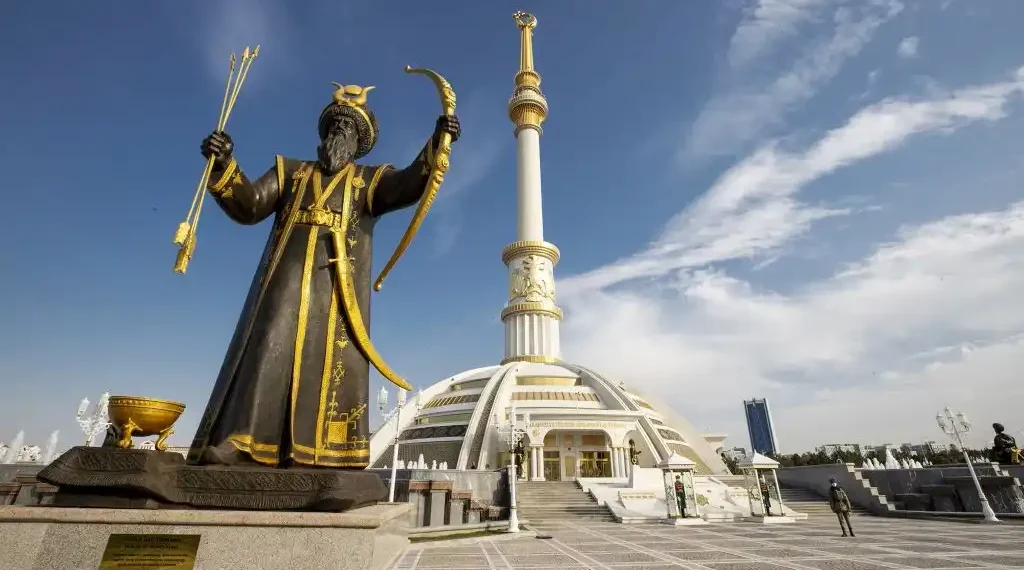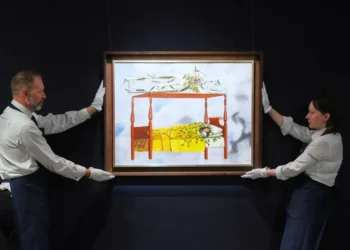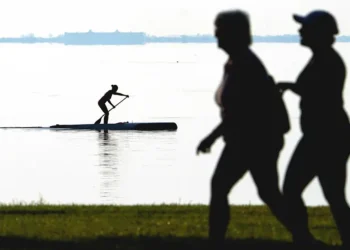Turkmenistan signals potential shift in tourism with planned visa changes
August 1, 2025, 14:00 EDT
Turkmenistan, long known for its isolationist policies and tightly controlled borders, has recently hinted at opening up to more international travelers. With promises of streamlined visa procedures and simplified entry requirements, the Central Asian nation may be taking its first serious steps toward becoming more accessible to global tourism.
A rare move from one of the world’s most closed-off nations
Turkmenistan, a former Soviet republic in Central Asia, has consistently ranked among the most reclusive countries in the world, comparable only to North Korea and Eritrea. Its closed-door approach to international relations stems from policies established during the post-Soviet era under longtime leader Saparmurat Niyazov, who emphasized neutrality and self-reliance while restricting outside influence.
For decades, visiting Turkmenistan as a tourist has been a complex and often opaque process. Travelers are typically required to book a tour through a state-approved operator and obtain a Letter of Invitation (LOI) from the Ministry of Foreign Affairs. The approval process can take months and may end in rejection without explanation.
So when the government announced in April 2025 that it planned to introduce new visa regulations to ease entry, it caught the attention of tour operators and travelers alike.
Dylan Lupine, founder of UK-based Lupine Travel, which runs small-group tours to Turkmenistan, noted that while the announcement was unexpected, details remain scarce. “We are still in the dark about it, as are our local partners in Turkmenistan,” Lupine said. “There have been no updates since. The new visa regulations haven’t yet come into place, and there’s no news of when this will be happening.”
What could change under the new visa system?
If implemented, the proposed visa reform would allow foreign visitors to apply online without the need for an LOI. Although travelers would still need a local sponsor—usually a tour company—officials claim the process would be faster and more transparent.
Tour operators like Lupine are cautiously optimistic. “Once it does come into place, I do think it will strongly boost visitor numbers,” he added.
CNN reached out to Turkmenistan’s Ministry of Foreign Affairs for confirmation and further details, but no formal response has been issued as of publication.
The enduring appeal of the ‘Gates of Hell’
Despite its inaccessibility, Turkmenistan holds a strong allure for adventurous travelers. Its most famous landmark is the Darvaza Gas Crater, nicknamed the “Gates of Hell.” Located in the Karakum Desert, about a four-hour drive from Ashgabat, the capital, this fiery pit has burned continuously since the 1970s after a Soviet drilling rig collapsed into an underground gas pocket.
Visitors who make the trek typically spend the night in nearby yurt camps and gather at the crater’s edge after dark to experience the eerie glow and heat of the flames. However, experts warn that the gas is running low, and the crater’s spectacular fire may extinguish in the coming years.
Beyond Darvaza: More reasons to visit Turkmenistan
Though the gas crater remains a key attraction, Turkmenistan has more to offer. The country boasts a rich Silk Road history, with ancient cities, grand mosques, and UNESCO World Heritage Sites such as Merv, Kunya-Urgench, and the Parthian Fortresses of Nisa.
Ashgabat, often described as one of the most surreal capitals in the world, stuns visitors with its sprawling white marble buildings and golden statues. The city is a mix of post-Soviet grandeur and unusual modernity, featuring Guinness World Record–winning structures like the largest indoor Ferris wheel and a national stadium topped with a massive golden horse head.
The capital’s Russian Bazaar is one of the few places where visitors can sample Turkmen caviar from the Caspian Sea and taste the fusion of Persian and Central Asian flavors that shape the local cuisine. While nightlife is limited, establishments such as Clever’s Irish Pub and the Florida British Pub offer casual options for evening relaxation.
A culture few outsiders get to experience
According to Erika Fatland, a Norwegian anthropologist and author of Sovietistan, Turkmenistan leaves a lasting impression. “Turkmenistan is unlike any country I have visited,” she said. “The shining white marble capital of Ashgabat, with its empty lanes, is one of the weirdest capitals I have ever visited.”
Fatland noted that while Ashgabat offers a unique urban experience, her most meaningful encounters took place in the countryside. “My most beautiful experiences in Turkmenistan were in the desert, where I encountered the friendliest, most hospitable people I have ever met,” she said. However, she cautioned travelers about chal, the national fermented camel milk drink: “Let’s just say it’s an acquired taste.”
Why change now?
Ironically, it was easier for foreigners to visit Turkmenistan during the Soviet era under Intourist, the USSR’s state-run travel agency. Established by Stalin in 1929, Intourist promoted tourism as a way to earn foreign currency and control what visitors could see.
Back then, guided tours took travelers to handpicked sites across the Soviet Union, including what was then known as Ashkhabad. Despite having the infrastructure for tourism, Turkmenistan declined to pursue international tourism aggressively after gaining independence in 1991.
Niyazov’s government turned inward, relying heavily on the country’s vast natural gas reserves to maintain economic stability and political independence. His successor continued similar policies, keeping tight controls on foreign visitation and the press.
Yet recent economic challenges may be driving a shift. According to the Bertelsmann Transformation Index, Turkmenistan has faced economic stagnation for nearly a decade. In response, the government is seeking greater international cooperation and investment, including gas-sharing agreements with neighbors like Turkey and Iran.
Following the lead of regional neighbors
Many observers see Turkmenistan’s tourism pivot as part of a broader regional trend. Neighboring Uzbekistan saw a surge in foreign visitors after it loosened visa rules in 2018 following the death of long-serving President Islam Karimov. Other Central Asian nations, including Kazakhstan and Kyrgyzstan, now offer visa-free travel for many nationalities.
“The other ‘Stans’ have all opened for visa-free entry,” Fatland said. “Maybe the Turkmen felt the need to loosen up a bit.”
Whether the new visa policy becomes a lasting reform remains to be seen. But even the possibility of more accessible travel to Turkmenistan signals a noteworthy shift for a country often overlooked on the global tourism map.
This article was rewritten by JournosNews.com based on verified reporting from trusted sources. The content has been independently reviewed, fact-checked, and edited for accuracy, neutrality, tone, and global readability in accordance with Google News and AdSense standards.
All opinions, quotes, or statements from contributors, experts, or sourced organizations do not necessarily reflect the views of JournosNews.com. JournosNews.com maintains full editorial independence from any external funders, sponsors, or organizations.
Stay informed with JournosNews.com — your trusted source for verified global reporting and in-depth analysis. Follow us on Google News, BlueSky, and X for real-time updates.














